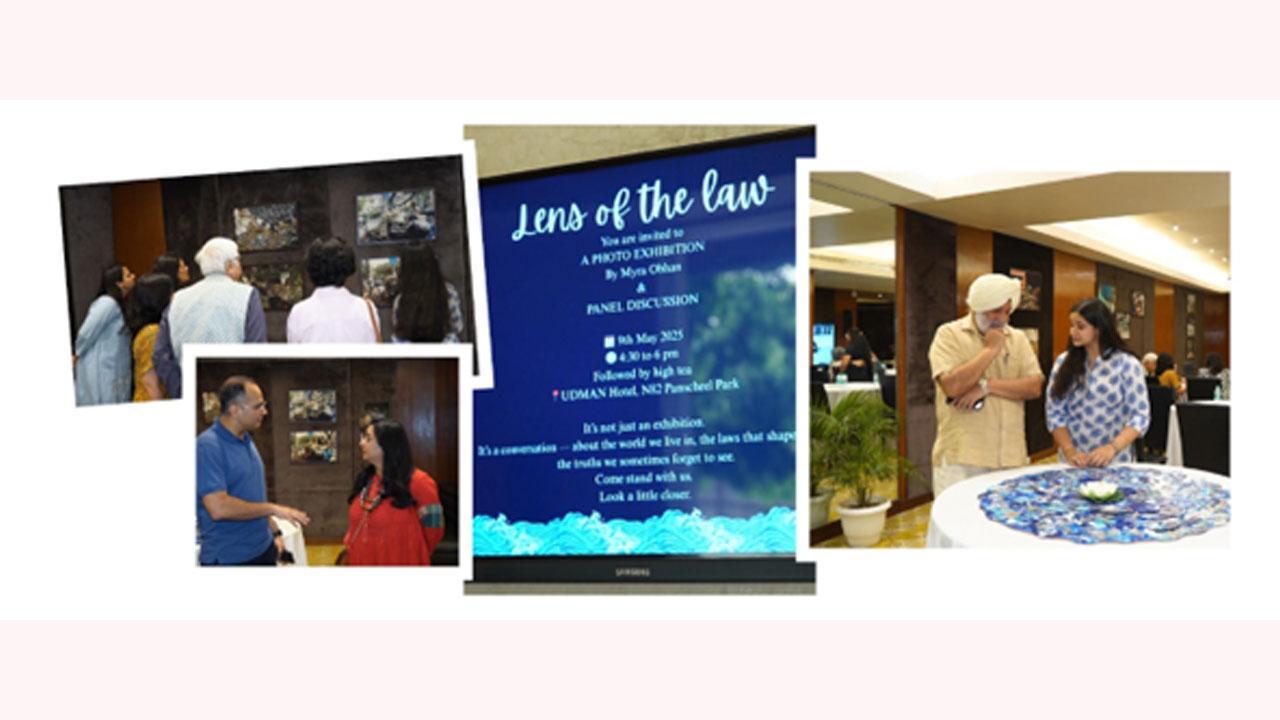The photographs and installations served as more than artistic statements - they became reference points for systemic critique.

Myra Obhan, a Grade 10 student at The Shri Ram School, Moulsari
In a city where broken pavements, overflowing garbage, and child labor at traffic lights have become everyday sights, it took the eye of a teenager to make people pause and reflect.
ADVERTISEMENT
Myra Obhan, a Grade 10 student at The Shri Ram School, Moulsari, recently brought together art, law, and lived experience through her independent initiative, “Through the Lens of the Law.” The event, held in Delhi, wasn’t just an exhibition - it was a powerful community moment that challenged audiences to reconsider how laws operate in daily life and why their absence in enforcement often causes more damage than their absence in legislation.
Featuring a street photography series and a central mixed media installation, the event gave voice to unspoken frustrations shared by millions in India’s cities - the kind that arise from leaking water pipes, abandoned construction sites, weak civic upkeep, and children working when they should be studying.
“It’s not that we don’t have laws,” said Myra. “It’s that we don’t feel them working in the world around us. My photographs capture those legal absences - where things are allowed to fall through cracks that shouldn’t exist.”
From Frame to Forum - A Teenager Moderates a Legal Dialogue
The event also included a panel discussion moderated by Myra, bringing together experts from law, civic leadership, and public service to reflect on what it truly means to “bridge a legal gap.”
The panelists included:
- Ms. Shefali Sewak, senior lawyer and member of the Public Grievances Commission, who addressed the institutional confusion that leads to many civic failures. “Often, a law exists. But who is supposed to enforce it? What if two departments think it’s the other’s job? This confusion creates a vacuum, and that vacuum becomes the citizen’s burden,” she said.
- Colonel A.S. Bedi, retired army officer and active community figure in Panchsheel Park, pulled no punches: “We have adopted an alarming culture of detachment. People say, ‘tennu ki’ or ‘mennu ki’ - why should I care? How does it affect me? This is exactly how cities rot - from collective apathy.”
- Mr. Vinit Taneja, community volunteer and long-time resident, lamented the absence of youth in urban leadership spaces. “We see the same people making the same decisions for decades. There’s no infusion of new perspectives. That’s why what Myra is doing is so vital.”
Together, they tackled issues of policy overlap, poor grievance redressal, low civic engagement, and the slow erosion of public accountability. Myra’s thoughtful moderation and ability to connect the discussion back to specific visuals from her exhibition lent the conversation structure and depth.
The Visual Language of Legal Failure
The photographs and installations served as more than artistic statements - they became reference points for systemic critique. Each image was a conversation starter: a bent school bag on the shoulders of a working child, a cracked sidewalk that forced pedestrians into traffic, a half-filled pothole cordoned off with a broken chair. These weren’t just photographs. They were civic testimonies.
At the center stood a striking installation built with discarded, layered CDs, representing fractured enforcement and blurred lines of jurisdiction. “What the law looks like on paper is very different from how people experience it,” Myra explained. “Some rules are clear; others are layered with dust, outdated references, or no practical grip on reality.”
This metaphor of invisible laws and visible suffering ran through every element of the exhibition - from the imagery to the installation to the framing of the panel.
Reactions from the Audience: From Silence to Spark
Attendees - ranging from school students to local residents, educators, and civic officials - shared deeply personal takeaways after the session. Some admitted to never having considered that civic problems stemmed from legal ambiguity. Others voiced interest in replicating the format - particularly the idea of combining photography and civic education.
“What impressed me wasn’t just the photography,” said one attendee, a retired schoolteacher. “It was the fact that a young person connected the dots between what we see and what we ignore - and then turned it into a public conversation.”
Another visitor, a college student studying political science, called the event “more effective than most civic awareness campaigns” he had seen. “Because it didn’t preach. It observed. It reflected. And then it asked: What are you doing about this?”
A Youth Blueprint for Legal Literacy
“Through the Lens of the Law” demonstrated how young citizens can do more than express concern - they can convene, curate, and even lead complex conversations. Myra’s work shows that the path to legal literacy and public engagement doesn’t need to start in law school or a courtroom. It can start in a classroom, through a camera, or on a footpath.
“My aim isn’t to criticize institutions,” said Myra. “It’s to make them work better - and that begins by making people aware of what’s not working.”
With plans to exhibit the work in more community spaces and schools, and with several civic bodies expressing interest in collaborating on awareness campaigns, Myra’s initiative seems to be gaining momentum.
The Final Word - From the Youngest Voice
What began as a student’s photography project has become a catalyst for civic introspection. Myra’s journey reminds us that the most powerful mirrors in a society are not always held up by courts or governments - sometimes, they are held up by a teenager with a camera, a question, and a cause.
 Subscribe today by clicking the link and stay updated with the latest news!" Click here!
Subscribe today by clicking the link and stay updated with the latest news!" Click here!












